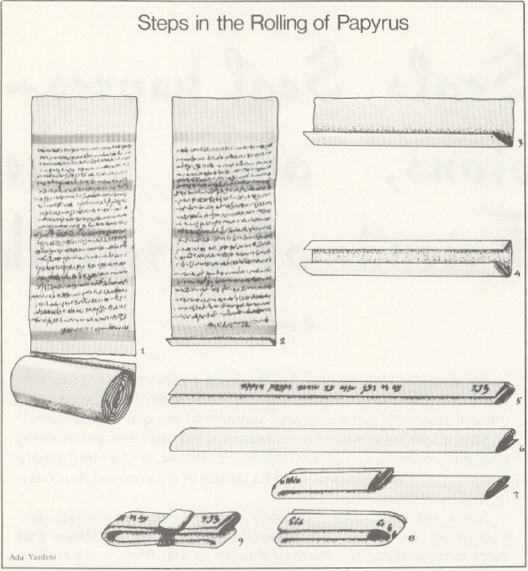Seals, Seal Impressions, and the Friends of Jeremiah -- By: Bryant G. Wood
Journal: Bible and Spade (First Run)
Volume: BSP 08:4 (Autumn 1979)
Article: Seals, Seal Impressions, and the Friends of Jeremiah
Author: Bryant G. Wood
BSP 8:3-4 (Summer-Autumn 1979) p. 97
Seals, Seal Impressions, and the Friends of Jeremiah
As in modern day society, seals served a very important function in antiquity. Not only did they identify the sender of a letter or commercial shipment, but a seal also guaranteed the quality and quantity of commercial products and prevented the unauthorized opening of a document or container. Important officials, and even ordinary citizens, had their own private seals for use in government, business, or legal activities.
Seals are mentioned frequently in the Bible, both literally and figuratively. In 1 Kings 21, when Jezebel drew up the letters that were to bring about the death of Naboth so that Ahab could acquire his vineyard, she authenticated the letters by sealing them with Ahab’s seal (verse 8). The sealing of a letter or legal document was accomplished by folding the document, tying it with string and then pressing a soft lump of clay onto the string. The official or scribe responsible for the document would then make an impression in the soft clay with his seal. It is these impressed clay sealings, called bullae (singular: bulla), that are often found by archaeologists, the original document having long since perished by fire or natural deterioration. Occasionally, the seal itself is found. In Nehemiah 9:38 the chief men of Jerusalem set their seals to a written covenant thus agreeing to abide by its contents. When Daniel was
BSP 8:3-4 (Summer-Autumn 1979) p. 98

Steps in the folding of a papyrus contract. Note the tying and sealing in step 9.
thrown into the lion’s den through the trickery of the other jealous officials:
a stone was brought, and laid upon the mouth of the den; and the king sealed it with his own signet, and with the signet of his lords; that the purpose might not be changed concerning Daniel. (Daniel 6:17)
The letters drawn up by Haman to kill all the Jews in the days of Esther were made official by sealing them with the king’s ring (Esther 3:12). Later, when Esther revealed the plot to the king and asked him to supersede the order he told her:
BSP 8:3-4 (Summer-Autumn 1979) p. 99
You may write as you please with regard to the Jews, in the name of the king, and seal it with the king’s ring; for an edict written in the name of the king and sealed with the king’s ring cannot be revoked. (
Click here to subscribe
